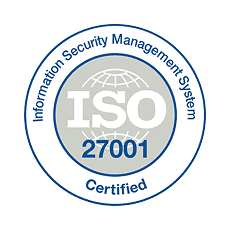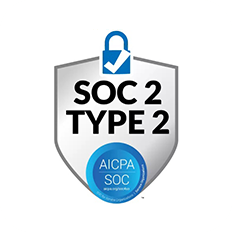Introduction
PrivateID is built for seamless, interoperable identity authentication with complete privacy at its core. Its edge-based architecture and patented tokenization ensure biometric data never leaves the device, enabling scalable, compliant, and frictionless authentication across industries.
Thales, a global security and defense technology provider, offers biometric identity solutions for payments, border security, and enterprise IAM. While robust and widely deployed, Thales relies on traditional biometric processing with centralized template storage and transmission. This creates privacy, scalability, and compliance challenges, particularly for enterprises and consumers requiring privacy-first authentication.
1. Architecture
PrivateID: Performs 1:1 biometric matching directly at the device edge. Biometric data and PII remain securely on-device, eliminating breach risks and simplifying compliance.
Thales: Relies on server/cloud infrastructure for biometric matching. Biometric images/templates must be transmitted and stored, increasing exposure risks.
2. Privacy & Tokenization
PrivateID: Uses patented Homomorphic Tokenization, converting biometrics into irreversible, anonymized tokens. IEEE 2410 certified, exempt from GDPR, CCPA, HIPAA, and BIPA obligations. No biometric data is transmitted or stored.
Thales: Traditional biometric templates are transmitted and stored for matching, creating regulatory obligations and potential exposure to breaches.
3. 1:1 vs 1:N Matching
PrivateID:
•1:1: Edge-only processing with no transmission.
•1:N: Only anonymized tokens sent for server-side comparison, enabling constant-time (~5ms) lookups regardless of gallery size.
Thales: Performs 1:1 and 1:N using traditional templates. Accuracy and efficiency degrade at scale as gallery size increases.
4. Multi-Modal Biometrics
PrivateID: Supports face, voice, palm, and fingerprint biometrics, combined with Passkeys and contextual signals (geolocation, Wi-Fi sensing, device fingerprinting) for risk-based authentication.
Thales: Provides multi-modal biometrics (face, iris, fingerprint) but primarily in government, border control, and payments systems with heavy infrastructure requirements.
5. Liveness Detection (PAD)
PrivateID: On-device PAD detects spoofing (photos, masks, deepfakes) without transmitting biometric data.
Thales: Provides liveness detection but requires biometric transmission to backend systems, increasing compliance and privacy risks.
6. Scalability & Efficiency
PrivateID: Unlimited scalability. 5MB image reduced to ~1KB token, minimizing bandwidth and processing costs while maintaining constant performance.
Thales: Scaling requires significant compute/storage infrastructure. Larger galleries lead to increased latency and reduced efficiency.
7. Accuracy
PrivateID: Delivers 99.999% accuracy across unlimited gallery sizes with tokenization reducing bias amplification.
Thales: Known for strong accuracy in facial and fingerprint recognition but relies on template storage, which can introduce scale-related degradation.
8. Compliance & Security
PrivateID: Inherently compliant with GDPR, CCPA, HIPAA, and BIPA. Annually certified to IEEE 2410. No biometric data transmitted or stored.
Thales: Customers carry compliance responsibility. Centralized storage and processing create ongoing regulatory and security exposure.
9. Deployment & Integration
PrivateID: Lightweight SDK/API deployable across IAM, healthcare, retail, and finance. Runs on general-purpose devices (desktop, mobile, POS, IoT).
Thales: Requires deployment of biometric hardware, servers, or cloud integrations, adding complexity, cost, and longer timelines.
10. Ethics & Trust
PrivateID: Built for user-consented, privacy-preserving authentication in enterprise and consumer workflows.
Thales: Widely used in government, defense, and border control. Raises concerns when repurposed for surveillance or non-consensual identity checks.
11. Cost & Total Cost of Ownership (TCO)
PrivateID: Tokenization and edge-first model dramatically lower compute, storage, and bandwidth costs. Minimal infrastructure reduces long-term TCO.
Thales: High infrastructure and integration costs for deployment at scale. Costs rise with gallery size and compliance needs.
12. Latency & User Experience
PrivateID: ~100ms constant processing ensures real-time authentication at scale. Optimized for seamless enterprise and consumer experiences.
Thales: Dependent on server/cloud roundtrips. Latency increases with gallery size, infrastructure load, and connectivity.
13. Deployment Flexibility
PrivateID: Supports edge, hybrid, on-prem, and cloud with no vendor lock-in.
Thales: Primarily designed for centralized deployments, requiring heavy infrastructure. Limited flexibility for lightweight edge-only use cases.
14. Ecosystem & Interoperability
PrivateID: Standards-based (IEEE 2410, FIDO2) interoperability with IAM, MFA, Passkeys, and risk-based authentication.
Thales: Strong ecosystem integrations in payments, government ID, and border control systems, but less focused on consumer IAM interoperability.
15. Bias & Fairness
PrivateID: Tokenization removes demographic markers, mitigating bias and ensuring fairness across populations.
Thales: Relies on traditional recognition pipelines that can inherit demographic biases present in datasets.
16. Business & Market Positioning
PrivateID: Positioned for enterprises, healthcare, finance, and retail needing privacy-first, compliant, and scalable biometric authentication.
Thales: Positioned globally in defense, government identity, border security, and payments, with less emphasis on consumer IAM.
Summary
PrivateID delivers privacy-preserving, scalable, and compliant biometric authentication for enterprises and consumers. Its edge-first, tokenized model eliminates biometric transmission and storage, reducing cost, compliance burden, and risk.
Thales, while a global leader in biometrics with strong accuracy and infrastructure, is built on traditional template-based processing that requires centralized storage and transmission. This model introduces privacy, compliance, scalability, and cost challenges, making it less suited for modern identity authentication in privacy-sensitive industries.














